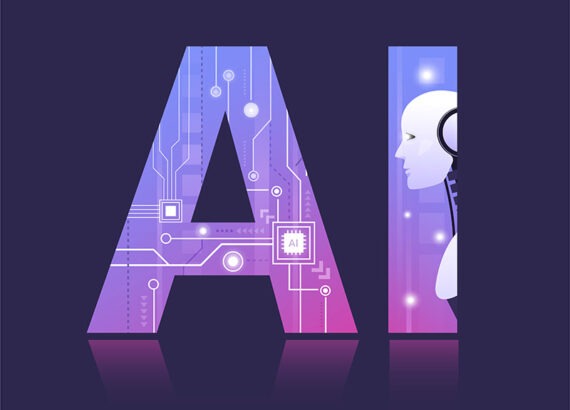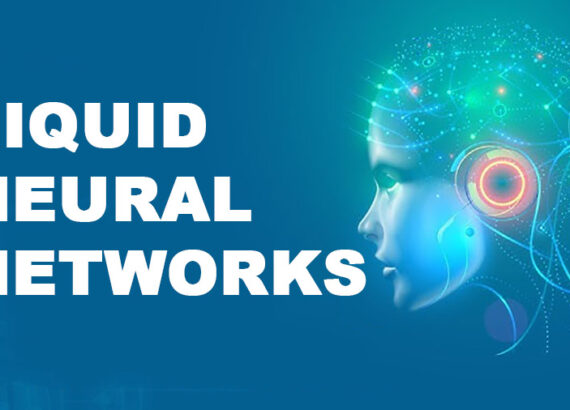Unlocking the Secrets of the Brain: The Mind-Reading Neural Link Revealed
The human brain, with its complex neural networks and intricate workings, has long fascinated scientists and researchers. Unlocking the secrets of the brain has been a pursuit that holds the potential to revolutionize numerous aspects of our lives. In recent years, a groundbreaking technology known as the mind-reading neural link has emerged, offering a glimpse into the future of brain-machine communication.
This article delves into the science behind the mind-reading neural link, explores its potential applications, and discusses the ethical and privacy concerns surrounding this transformative technology. Join us on this captivating journey as we unravel the mysteries of the brain and witness the dawn of a new era in human-machine interaction.
1. Introduction: The Promise of Mind-Reading Neural Link Technology
The Evolution of Brain-Computer Interfaces
Remember when controlling a computer with your mind seemed like something from a science fiction movie? Well, strap in because we’re about to dive into the mind-blowing world of mind-reading neural link technology! Over the years, brain-computer interfaces (BCIs) have come a long way, transforming the way we interact with machines. From simple EEG headsets that let us play a few mind-controlled games to sophisticated implants that can restore mobility to paralyzed individuals, BCIs have shown immense potential.
The Potential of Mind-Reading Neural Link
But now, a groundbreaking breakthrough has taken this technology to a whole new level. The mind-reading neural link has arrived, promising to unlock the secrets of the brain and allow us to communicate with machines using only our thoughts. It sounds like something out of a superhero movie, but it’s very real. This technological marvel has the potential to revolutionize everything from medicine and education to entertainment and communication. So, let’s dive into the science behind this mind-boggling development!

2. The Science Behind the Mind-Reading Neural Link
Understanding Neurons and Neural Networks
To unravel the mysteries of the mind-reading neural link, we first need to understand the building blocks of the brain: neurons. Neurons are the cells responsible for transmitting information in our brains through electrical signals. These signals create intricate networks known as neural networks, which govern our thoughts, actions, and emotions. This mind-bending complexity is what scientists are tapping into with the mind-reading neural link.
Decoding Brain Signals: Electroencephalography (EEG) and Functional Magnetic Resonance Imaging (FMRI)
So, how do we capture and decode these electrical signals to understand what’s happening in our brains? Enter electroencephalography (EEG) and functional magnetic resonance imaging (fMRI). EEG uses a set of sensors placed on the scalp to measure electrical activity in the brain, while fMRI uses powerful magnets to track blood flow changes associated with brain activity. These techniques allow scientists to decipher the patterns of neural activity and understand how our brains process information.
3. Understanding the Brain-Machine Interface: How Neural Link Works
Recording Neural Activity with Invasive and Non-Invasive Techniques
Now that we have a grasp on the inner workings of the brain, let’s explore how the mind-reading neural link works. Scientists have developed both invasive and non-invasive techniques to record neural activity. Invasive methods involve surgically implanting tiny electrodes into the brain, enabling direct communication with individual neurons. On the other hand, non-invasive methods utilize external sensors, such as EEG caps or fMRI machines, to monitor brain activity from outside the skull. The choice of method depends on the specific application and level of precision required.
Translating Brain Signals into Actionable Commands
Once the neural activity is recorded, the next challenge is translating those signals into actionable commands that can be understood by machines. This involves decoding the patterns of neural activity and mapping them to specific actions, such as moving a robotic arm or typing on a keyboard. Through extensive training and machine learning algorithms, scientists can decipher the code of the brain and establish a clear line of communication between the mind and the machine.
4. Unveiling the Secrets of the Human Brain through Mind-Reading Neural Link
Advancements in Brain Mapping and Neural Encoding
With the mind-reading neural link in action, we can now embark on a journey to uncover the secrets of the human brain like never before. This technology allows researchers to map the intricate connections and pathways of the brain, providing insights into how different regions work together to create thoughts, memories, and emotions. Furthermore, neural encoding studies help us understand how information is represented and processed by the brain, opening doors to new possibilities in neuroscience and artificial intelligence.
Discoveries in Cognitive Processes and Mental States
Beyond the scientific realm, the mind-reading neural link holds tremendous potential for understanding cognitive processes and mental states. By decoding brain activity, we can gain valuable insights into how our minds work when we make decisions, experience emotions, or even dream. This knowledge can pave the way for advancements in mental health treatments, personalized learning approaches, and even enhancing our self-awareness.
So, hold on to your hats because the mind-reading neural link is taking us on an exciting journey deep into the recesses of the human brain. Prepare to be amazed as we unlock the secrets of our minds and broaden the horizons of what we thought was possible. The future has arrived, and it’s pushing the boundaries of what it means to be human.
5. Potential Applications and Implications of Mind-Reading Neural Link Technology
Revolutionizing Communication and Assistive Technologies
Imagine a world where communication is no longer limited by the limitations of our vocal cords or the written word. With mind-reading neural link technology, individuals can directly transmit their thoughts and feelings to others. This has the potential to revolutionize communication for those with speech impairments or conditions like locked-in syndrome, giving them a voice they thought they had lost forever. Additionally, assistive technologies could be enhanced, allowing individuals to control devices or prosthetics with their minds, offering newfound independence and freedom.
Enhancing Learning, Training, and Rehabilitation
Learning could take on a whole new dimension with the mind-reading neural link. Imagine effortlessly acquiring new knowledge or skills by directly interfacing with educational programs or experts. Whether it’s learning a language or mastering a musical instrument, the neural link could accelerate the learning process by tapping into the vast knowledge and experiences of others. Furthermore, the neural link could be used in rehabilitation settings, aiding individuals in recovering from injuries or cognitive impairments by creating targeted neural pathways for recovery.
Ethical and Social Considerations
While the mind-reading neural link holds tremendous potential, it raises important ethical and social considerations. Privacy concerns come to the forefront, as the technology delves into the intimate realm of thoughts and emotions. Striking a balance between preserving individual privacy and enabling technological advancements will be crucial. Additionally, questions of neurodiversity may arise, as the technology could potentially normalize certain thought patterns or behaviours. Society must navigate these considerations to ensure the responsible and equitable use of mind-reading neural link technology.

6. Exploring the Ethical and Privacy Concerns Surrounding Neural Link
Ensuring Informed Consent and Privacy Protection
As mind-reading neural link technology progresses, it is vital to prioritize informed consent and privacy protection. Individuals must have a comprehensive understanding of the implications and risks associated with using the technology. Strict protocols on data collection, storage, and access should be implemented to safeguard the privacy and autonomy of users. Transparency and open dialogue between developers, researchers, and the public will build trust and ensure responsible development and deployment.
Addressing Potential Misuses and Threats
The mind-reading neural link, like any technological advancement, can be misused or pose threats if not properly regulated. Considerations must be made to prevent unauthorized access to neural data and protect against potential hacking or manipulation. Ethical guidelines and regulations should be in place to prevent the misuse of mind-reading neural link technology for purposes such as coercion, manipulation, or invasion of privacy. Striking a balance between innovation and safety is imperative in the ethical development and deployment of this technology.
7. Challenges and Future Directions in the Development of Mind-Reading Neural Link
Improving Signal Resolution and Accuracy
One of the primary challenges in mind-reading neural link technology is improving signal resolution and accuracy. Currently, the technology can only capture a fraction of the brain’s vast neural activity. Advancements in signal processing and electrode technology are needed to enhance the resolution and fidelity of neural signals, allowing for more precise decoding and interpretation of thoughts and intentions.
Overcoming Technical Limitations and Hardware Constraints
The development of mind-reading neural link technology faces technical limitations and hardware constraints. Miniaturizing the necessary components to make the neural link portable and non-invasive is a major hurdle. Additionally, finding a balance between the complexity of the technology and its usability for the average user will be crucial. Overcoming these challenges will require interdisciplinary collaboration and innovation in materials science, engineering, and neuroscience.
Integrating Neural Link with Artificial Intelligence
The integration of mind-reading neural link technology with artificial intelligence (AI) holds tremendous promise. By combining AI algorithms with neural data, the potential for personalized and adaptive applications expands. AI could assist in decoding complex neural patterns and translating them into meaningful experiences, amplifying the capabilities of mind-reading neural link technology. However, careful consideration must be given to ensure that AI integration preserves user autonomy and respects individual privacy.
8. The Exciting Future of Brain-Machine Communication
The mind-reading neural link represents an exciting frontier in the realm of brain-machine communication. With the potential to revolutionize communication, enhance learning and rehabilitation, and overcome physical limitations, this technology offers a glimpse into a future where our thoughts and intentions can be directly translated into action. However, ethical considerations, privacy concerns, and technical challenges must be navigated with care. By advancing these technologies responsibly, we can unlock a future where the mind and machines seamlessly interact, improving the lives of individuals and society as a whole.
Conclusion
In conclusion, the mind-reading neural link technology opens up a realm of possibilities for understanding and interacting with the human brain in ways we could only imagine before. As we continue to unravel the intricacies of neural networks and advance the capabilities of brain-machine interfaces, we must tread carefully, addressing ethical considerations and ensuring privacy protection.
Nonetheless, the future of brain-machine communication holds immense promise, revolutionizing fields such as healthcare, communication, and education. With ongoing advancements and continued research, we stand on the cusp of an exciting era where our minds and machines converge, unlocking the full potential of our cognitive abilities
FAQ
1. How does the mind-reading neural link technology work?
The mind-reading neural link technology utilizes advanced brain-machine interfaces to record and interpret neural activity. By capturing signals from the brain, such as electrical impulses or brainwave patterns, the technology decodes this information and translates it into actionable commands, enabling direct communication between the brain and external devices.
2. What are the potential applications of mind-reading neural link technology?
Mind-reading neural link technology has a wide range of potential applications. It could revolutionize communication for individuals with disabilities, allowing them to express their thoughts and desires directly. It also holds promise in enhancing learning and rehabilitation, enabling more effective training programs and therapies. Additionally, the technology may find applications in the fields of virtual reality, gaming, and neurofeedback, opening up new possibilities for immersive experiences and personalized interactions.
3. What are the ethical concerns surrounding mind-reading neural link technology?
As with any emerging technology, mind-reading neural link technology raises ethical concerns. These include issues of informed consent, privacy and data security, and potential misuse of the technology. It is essential to ensure that individuals using this technology have full understanding and control over the information being gathered from their brains and that appropriate safeguards are put in place to protect their privacy and prevent unauthorized access or manipulation of their thoughts.
4. What are the future directions for mind-reading neural link technology?
The development of mind-reading neural link technology is an ongoing endeavor, with numerous avenues for future exploration. Researchers are working to improve the resolution and accuracy of neural signal decoding, allowing for a more precise interpretation of brain activity. Integration with artificial intelligence and machine learning algorithms holds the potential to enhance the capabilities of the technology further. Additionally, advancements in hardware and miniaturization could lead to more accessible and user-friendly devices, bringing mind-reading neural link technology into the mainstream.
Thank you for reading 🙂
If you want to build your website at an affordable price contact: www.nextr.in
Read this: How To Become A Web Developer?

















